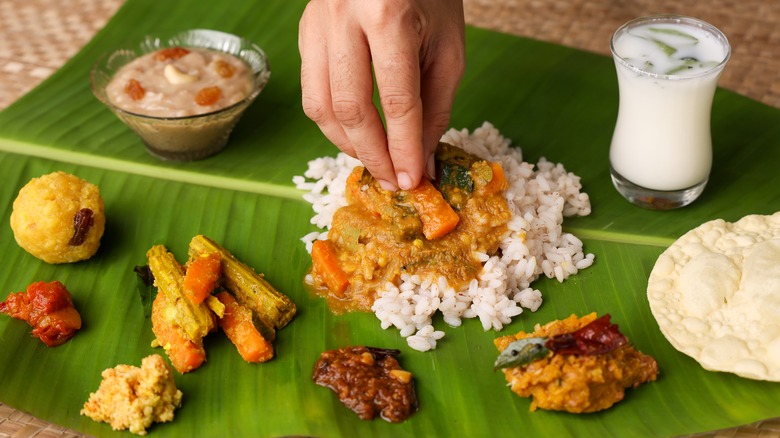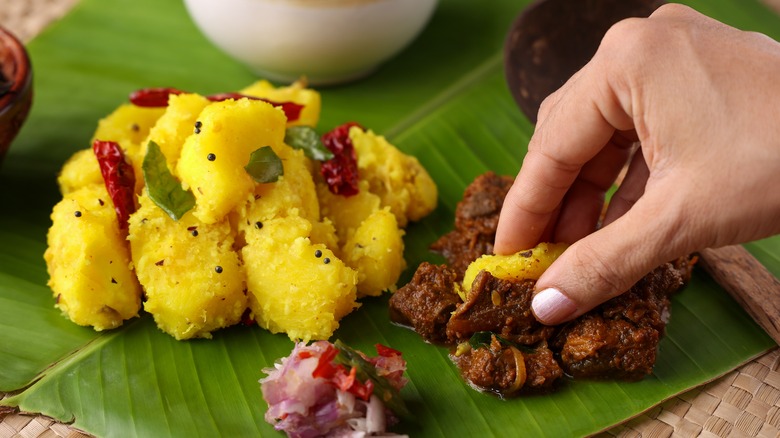Here's The Right Way To Eat Indian Food With Your Hands
For those who didn't grow up in Indian culture, eating with our hands can seem daunting. How do you approach a plate full of rice, lentils, vegetable dishes, and bread without making a mess? Don't be tempted to ask for cutlery: This is a frequent mistake diners make when eating at Indian restaurants, but there's a manageable way to eat Indian food with your hands. So, put the knife and fork away, and we'll teach you to dig in — fingers first.
First, use your fingers to mix a small amount of food into your rice. This action helps the food stick together, making it easier to pick up. Next, scoop the mixed rice with your fingertips and use your thumb to push it into your mouth. Avoid putting your fingers directly in your mouth — they should only guide the food. Many believe that our fingertips carry vital energy that enhances our connection and relationship with food, which explains the emphasis on eating with the fingertips.
Furthermore, if you're eating bread or classic masala dosa, hold it down with your thumb and use your fingers to tear off a small piece, then fold it in half. Use the torn-off piece as a makeshift spoon to scoop the food mess-free. And above all else, remember: Use your right hand when eating. Throughout India, as in much of Asia, Africa, and South America, the left hand is reserved for personal hygiene, while the right hand is for eating.
There's an ancient culture and custom behind the tradition
In the West, eating with our hands is stigmatized as "uncouth," "unhygienic," "bad manners," and especially problematically, "uncivilized." Is this a leftover effect of a colonial mindset? Perhaps — table manners are undoubtedly rooted in class inequality worldwide. Interestingly, in India (which suffered centuries of colonial rule), eating with your hands is customary, regardless of whether you're in the comfort of home, at a casual eatery, or dining in a prestigious Michelin-starred restaurant.
The practice dates back millennia, with traditional Vedic wisdom claiming the approach fosters mindfulness and respect for our food by engaging with the senses, improving the flavor, and even aiding digestion. As a result, eating with your hands is considered a sign of utmost respect. It's also connected with India's major religions; across Hindu communities of South India, where banana leaves are more common than plates, servers unfurl the leaves, then sprinkle the leaf — and your hands — with water to cleanse and purify the environment and to seek blessings from God. Similarly, the food offered to God (prasad) during prayers (puja) is distributed to worshippers and invariably fed by hand. Even in Islam (the second largest religion in India), the Quran teaches eating with your hands.
Other customs include hand washing after eating — for obvious reasons. Surprisingly egalitarian, finger bowls with hot water and lemon (mostly austere and made from authentic stainless steel) thrive in rickety roadside dhabas and metropolitan restaurants. In the U.S., Indian restaurants may provide scented hand wipes.

